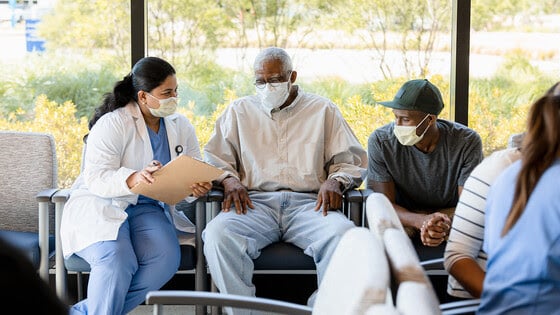Blacks, Hispanics More Likely to Report Long COVID Symptoms

WASHINGTON — Black and Hispanic respondents were more likely than other racial or ethnic groups to report COVID-19 symptoms lasting three months or longer, according to a new Household Pulse Survey conducted by the U.S. Census Bureau.
The Household Pulse Survey, an experimental online survey representative of the U.S. adult population at the state and national level, began asking about long COVID symptoms in June 2022, more than two years after the pandemic hit the United States.
It found that 31.1% of respondents aged 18 and over reported long-lasting symptoms.
Respondents were asked if they had ever tested positive for or had been told by a health care provider that they had COVID-19. Respondents who answered “yes” were then asked if they had symptoms they did not have pre-COVID-19 that they still experienced at least three months later.
The HPS data tool allows users to explore a number of different national, state and metro area estimates, including the percentage of adults who experienced long COVID symptoms.
Who Suffers Long COVID?
Hispanic respondents were the most likely to report long COVID symptoms and non-Hispanic Asian respondents were the least likely.
Though less likely than Hispanic respondents, Black respondents were more likely than White or Asian respondents to suffer long COVID.
Women were more likely than men to say they suffered long-lasting symptoms.
But respondents who identified as “Transgender” or “None of these” listed genders were far more likely to suffer from long COVID than those identifying as male or female.
Respondents identifying as gay/lesbian or straight were the least likely to suffer from long COVID symptoms and were not statistically different from one another.
People between ages 40 and 59 were the most likely to report long COVID symptoms, while those in the oldest age category (70 and over) were the least likely.
Does Long COVID Vary by Education and Income?
Respondents without a high school degree were the most likely to report long COVID symptoms while those with a college degree were the least likely.
Those with a high school degree or less were the least likely to report having tested positive for COVID-19 while those with at least some college were the most likely.
When it came to income comparisons, the researchers limited themselves to asking questions of two-adult/two-children households.
Not all estimates were significantly different but it is clear that those at the top income distribution (more than $100,000) were less likely than those at the bottom (less than $100,000) to report long COVID.
Approximately 27% of long COVID sufferers were financially insecure, compared to 18% of people who never tested positive for COVID-19, and 15% of people who did but did not have long COVID symptoms.
Respondents reporting they never tested positive for COVID-19 actually faced higher levels of hardship than those who did test positive but reported no long-lasting symptoms.
Dan can be reached at [email protected] and @DanMcCue

























